35 Halloween Facts to Make the Season Even Spookier
Think you know everything about your favorite holiday? Think again.
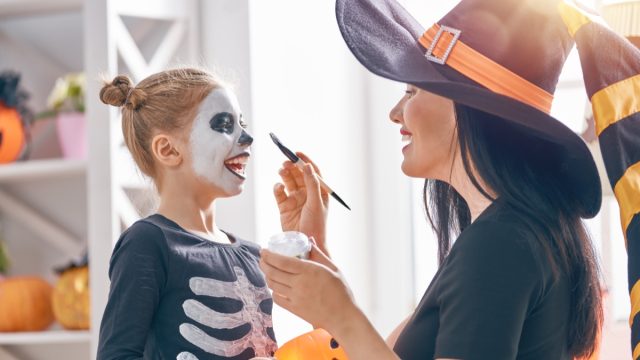
Who doesn't love Halloween? It's the only holiday that involves dressing up in fun costumes, collecting candy, and decking out your house in spooky decor. But while Halloween is one of the most popular American holidays, there's a lot that most of us don't know about it. So we've collected 35 of the most interesting (and bone-chilling) Halloween facts to boost your Oct. 31 IQ. From how much money Americans spend on sweets for trick-or-treaters to the origin of the game bobbing for apples, these facts will give you pumpkin to talk about!
RELATED: 55 Amazing Fall Facts That Will Make You So Excited for the Season.
35 Facts About Halloween We Bet You Didn't Know
1. Potatoes were originally used to make jack-o'-lanterns on Halloween.
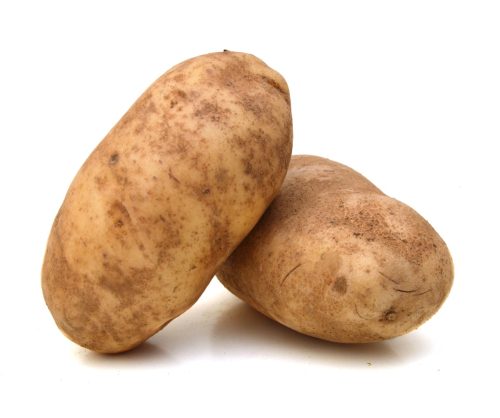
Halloween wouldn't be the same without a few carved pumpkins adorning your porch. But years ago in Ireland, where the jack-o'-lantern tradition began, the decorations were made using vegetables that were more readily available: large potatoes and turnips. When the tradition made its way to the U.S. through immigration, Americans began using pumpkins instead.
2. Jack-o'-lanterns were inspired by a deal with the devil.

As mentioned, jack-o'-lanterns first started popping up in Ireland, but not for the reasons we celebrate today. The tradition was based on the legend of a man named "Stingy Jack," who supposedly invited the devil to have a drink with him. True to his name, Jack wanted to find a way around paying, so he convinced the devil to turn himself into a coin that could be used to pay for the drinks.
Unsurprisingly, that didn't go over well. Jack eventually dies but is refused entry into both Heaven and Hell. As a result, he is doomed to roam the earth for all eternity, left with only a lump of burning coal secured by a carved-out turnip to light his way. Locals began referring to him as "Jack of the Lantern," which was eventually shortened to "Jack O'Lantern." Irish and Scottish immigrants later brought the tradition with them to the United States.
3. And bobbing for apples started as a British courting ritual.
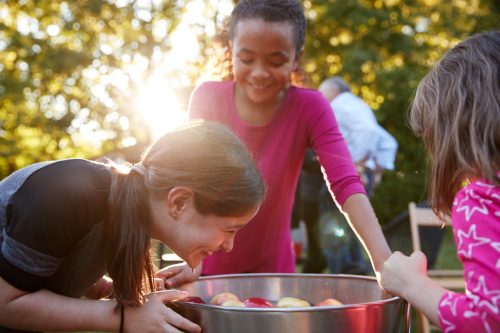
Bobbing for apples remains one of our most popular Halloween (and autumn in general) traditions. But the activity began as an 18th-century British courting ritual, according to the History Channel. In one set of rules, each apple was assigned to a potential suitor. The woman bobbing for apples would attempt to bite into the apple associated with her preferred suitor. If she bit it on the first try, they would be destined for love. If it took her two tries, their love would fizzle out. If it took her three, their relationship would be doomed.
4. There is only a full moon on Halloween three or four times per century.

A large full moon creates the perfect atmosphere for a spooky night. However, full moons rarely happen on Halloween. According to The Old Farmers Almanac, a full moon on Halloween only occurs roughly once every 18 or 19 years. If the full moons are calculated using Greenwich Mean Time, that translates to approximately three to four times per century. The last time we experienced a full moon on Halloween night was back in 2020, so we've got a while to go until the next one.
5. Americans buy enough Halloween candy to fill six Titanics.
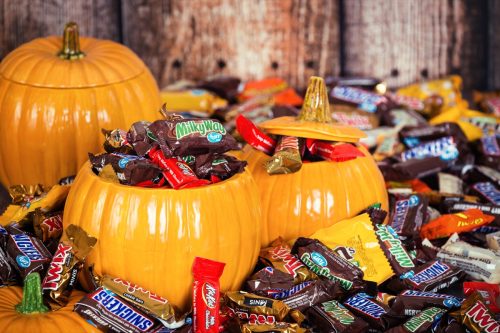
We Americans love our candy. So much so that during Halloween week alone, we consume around 600 million pounds of the stuff, which is the equivalent of two pounds of candy per person. According to the data whizzes at Vox, if you put all that Halloween candy in one big pile, it would be enough to fill six Titanics!
6. And candy makers produce around 35 million pounds of candy corn a year.
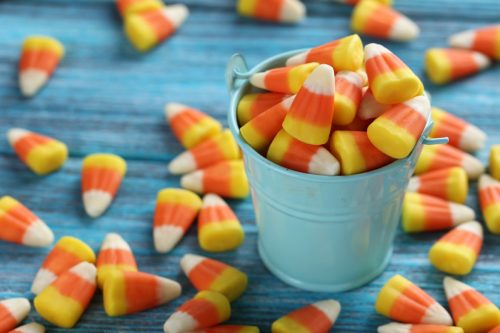
These white, orange, and yellow triangles of sugar are meant to resemble a kernel of corn. The candies were first created in 1898 by the Jelly Belly Candy Company while it was still known as California's Herman Goelitz Confectionery Company. Today, around 35 million pounds of candy corn are produced each year, according to the National Confectioners Association. Despite that, they're often ranked one of the worst Halloween candies out there.
7. Candy corn was originally called "Chicken Feed."

And that's not all—the box this popular Halloween candy came in featured a large, red rooster. The idea was to appeal to the nation's agricultural roots. It's not exactly the most appetizing fact to share around the candy bowl, but it's still pretty fascinating.
RELATED: 67 Weird Facts So Strange, You Won't Believe They're True.
8. Trick-or-treating came to a halt during World War II.
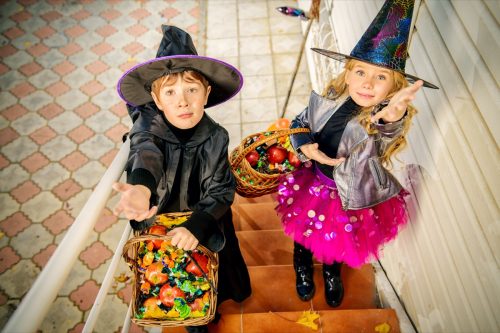
A lot of things changed during World War II, and that extended to Halloween traditions. Children didn't go trick-or-treating during the conflict, because sugar was being rationed. The practice was paused until peacetimes returned.
9. And the tradition was re-popularized by the Peanuts.
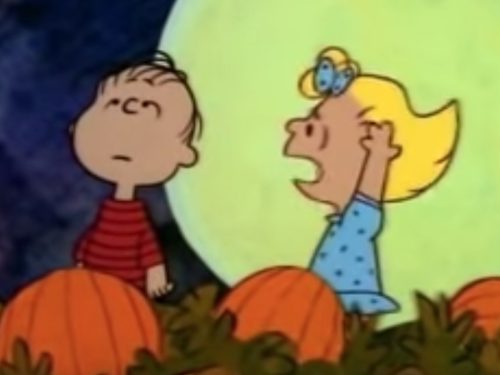
When the war was over and sugar rationing ended, children were able to go trick-or-treating once again. However, since the conflict had gone on for years, many young ones had never been out on Halloween and weren't familiar with the concept. According to Business Insider, The Adventures of Ozzie and Harriet and the Peanuts comic strip "helped to re-popularize the tradition of dressing up in costumes and asking for candy from door-to-door."
10. It can be difficult to adopt a black cat near Halloween for superstitious reasons.

If you're interested in adding a black cat to your family around Halloween, you might have a some trouble tracking one down. In 2017, Lynda Garibaldi, director of The Cats' Cradle shelter in Morganton, North Carolina, told HuffPost that their organization does "not adopt out black cats during the month of October … because of superstition and the concern that the wrong people (who might harm them) might adopt them."
Emily Weiss, vice president of Shelter Research and Development at the ASPCA, confirmed that "this used to be a pretty common" precaution. Thankfully, she added that these days, some shelters hold special adoption promotions around Halloween that focus on finding black cats their fur-ever homes.
11. The construction of the world's largest Ouija board led to lots of spooky occurrences.
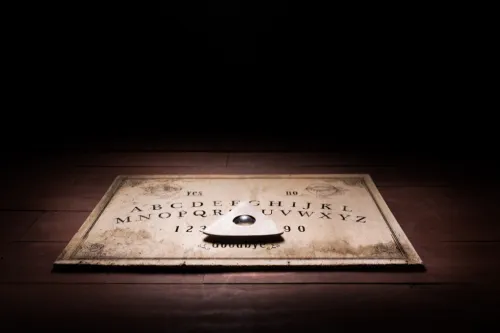
The largest Ouija board in the world was created on the roof of the Grand Midway Hotel, an appropriately haunted establishment in Windber, Pennsylvania. Measuring 1,302.54 square feet, the Ouija board has amped-up hauntings since it was installed, according to the project's co-creator and hotel resident, filmmaker Blair Murphy.
"Things flipped out throughout the hotel. Energies were swirling. Guests were getting completely freaked out," Murphy told Guinness World Records in 2017. "It seemed to kick things up into an entirely new level of paranormal activity. We were seeing floating people and hearing voices and even the hotel pets were flipping out and reacting to unseen forces. Our dreams were pretty wild. And it wasn't just us. Other longer-term hotel residents were saying, 'There is absolutely something going on here' and having their own middle-of-the-night weird encounters.'"
12. Purple may have become a Halloween color to please children.

Orange is associated with Halloween because it's a harvest color (think of orange pumpkins and leaves) and black is associated with Halloween because of its links to death and darkness. But nowadays, purple is used almost as frequently in seasonal décor. So what gives?
According to Scientific American, the third shade was added to please little ones. "As a child-friendly color, it may have been used to soften the use of black and make the holiday and its themes palatable to a younger crowd."
13. Trick-or-treating began in the U.K., Ireland, and France.
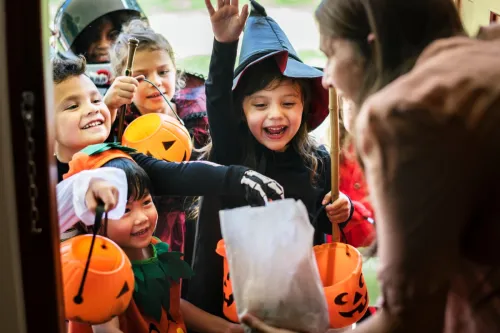
Trick-or-treating has been a beloved Halloween tradition in North America for nearly a century, but it actually began in what is now the U.K., Ireland, and northern France. According to the History Channel, Halloween originated as a 2,000-year-old pre-Christian Celtic pagan festival, in which villagers would wear costumes made of animal skins to disguise themselves and drive away evil spirits.
Centuries later, people began dressing as ghosts, demons, and other devilish creatures and performed antics in exchange for food and drink. "This custom, known as mumming, dates back to the Middle Ages and is thought to be a predecessor of trick-or-treating," the History Channel notes.
14. But the first use of the term "trick-or-treating" came nearly 100 years ago in Canada.
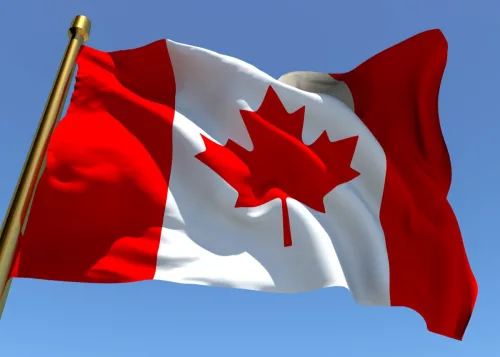
Halloween, in one form or another, may have been around for thousands of years, but we've only been saying "trick or treat" for about 100 years. According to Nick Rogers, historian and Halloween expert, the earliest reference to the now-familiar term can be found in a newspaper clipping from The Blackie Times published in Blackie, Alberta, on November 3, 1927.
"It's a very interesting excerpt in two ways," Rogers told the Calgary Eyeopener, according to the CBC. "It not only talks about trick-or-treating, but it talks a little bit about the kind of ritual vandalism that accompanied the holiday, particularly in the interwar years."
RELATED: 55 Fascinating World Facts You Need to Know.
15. The most common Halloween costume for pets is a pumpkin.
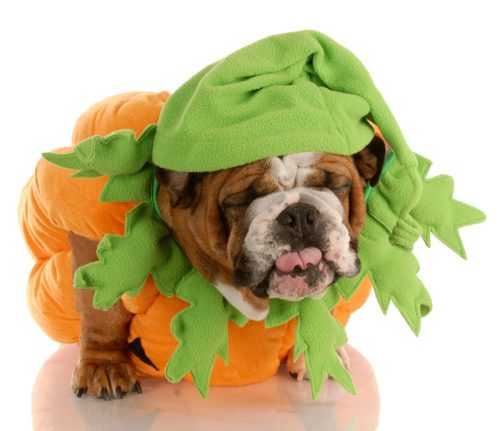
The only way to make an already cute pet even cuter is by giving them a costume. And, according to a 2022 survey by the National Retail Federation, one in five people celebrate Halloween by dressing up their furry friends. The most common pet costumes that year were pumpkins, hot dogs, dogs, lions, pirates, bumblebees, and devils.
16. And for people, classic costumes are still the most popular.
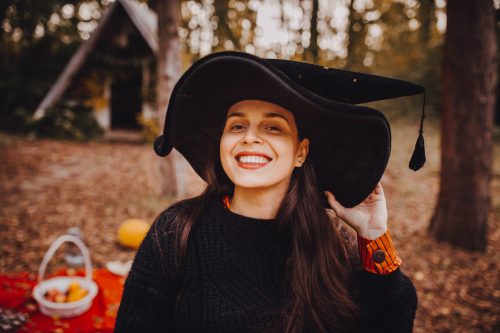
Google's Frightgeist is a handy tool that allows you to check out which costumes are trending across the United States. In 2022, the site revealed that the most popular Halloween costumes included characters from Stranger Things and Marvel Comics. However, the list also included plenty of classic costumes, like Spider-Man, dinosaurs, pirates, and princesses. And witches still rank as No. 1.
17. Halloween costumes can change kids' behavior.

It's not just a wardrobe change—a child's costume can seriously impact their behavior. One 1979 study published in Psychological Reports found that children in costumes with masks tended to take more candy from unattended candy bowls than children who wore costumes without masks.
18. Silly String is banned in Hollywood on Halloween.

If you're celebrating Halloween in Hollywood, then be sure to leave your silly string at home. In 2004, the city passed an ordinance that banned silly string from the area on that day. If you're caught with silly string between midnight on Oct. 31 and noon on Nov. 1, you might find yourself with a $1,000 fine. Along with being bad for the environment and a nuisance to clean up, the ordinance also claims that silly string "may cause pedestrians and police officers on horseback or motorcycles to slip and fall."
19. Pumpkins are a fruit, not a vegetable.

While you might assume that we carve our jack-o'-lantern designs into a big ol' orange vegetable every year, pumpkins are actually a fruit. To be more specific, they're a type of squash.
20. And Illinois produces most of the pumpkins in the United States.
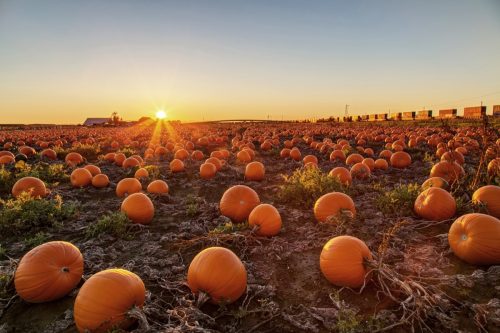
If you enjoy a pumpkin pie this Halloween, there's a high chance that the filling inside it came from Illinois. According to the Department of Agriculture, Illinois harvests more than twice as many pumpkin acres as any of the other top pumpkin-producing states. The state devotes a total of 15,900 acres to the fruit, which is harvested specifically for pumpkin pie filling or other processing uses. California, Indiana, Michigan, New York, North Carolina, Ohio, Pennsylvania, and Texas also produce a large number of pumpkins.
21. Anoka, Minnesota, is home to America's oldest official Halloween celebration.
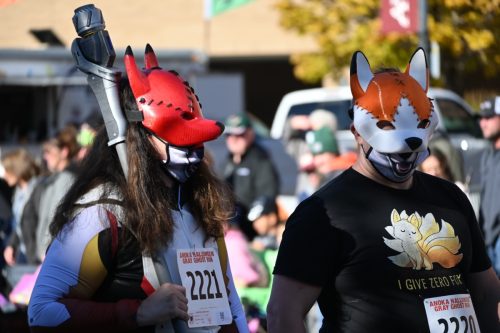
If you're looking for the United States' oldest official Halloween celebration, then you should head to Anoka, Minnesota. The city started holding an annual parade and bonfire back in 1920 after European immigrants first brought the spooky seasonal fun over to America around the 1800s. According to National Geographic, "Anoka historians say townsfolk wanted to curb Halloween pranks that loosed cows on Main Street and upended outhouses."
RELATED: 39 Facts About Storms That Will Make You Run for Cover.
22. Harry Houdini died on Halloween.

Escape artist Harry Houdini became famous for narrowly dodging death. However, while his sudden passing in 1926 wasn't directly related to any of his magic tricks, it was something of a mystery. According to the History Channel, "the 52-year-old performed before a packed house in Detroit on Oct. 24 but was rushed to the hospital afterward with an apparent case of appendicitis. He died just a week later on Halloween, leaving his legions of admirers bewildered."
23. We spend billions of dollars annually getting ready for Halloween.
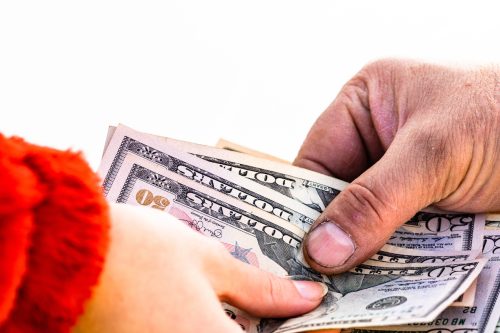
You're not alone if you tend to shell out more cash on Halloween than you'd like to admit. According to the National Retail Federation's annual survey, Americans spent an estimated $10.6 billion on Halloween-related goods in 2022. That's about $100 per person.
24. But chances are men will spend even more money on Halloween.
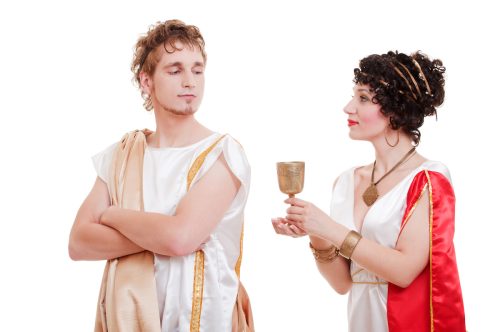
According to another survey conducted by LendingTree, men are likely to spend well over that average on the holiday, at $228 a head. They're also nearly twice as likely to post about it on social media than their female counterparts.
25. And women are more likely to carve pumpkins.

Men and women don't only differ in how much money they spend on Halloween. They also celebrate with different activities. A 2018 report from the National Retail Foundation noted that women are "much more likely than men to celebrate by carving pumpkins and decorating their homes… Men, on the other hand, are significantly more likely to attend a party."
26. The song "Monster Mash" was No. 1 on the Billboard Hot 100.

Actor-turned-songwriter Bobby "Boris" Pricket earned the top spot on the Billboard Hot 100 chart in 1962 with his tune "Monster Mash." According to Steve Greenberg, the founder of S-Curve Records and a Grammy-winning record producer, "Monster Mash" is "the Halloween equivalent of 'Rudolph the Red-Nosed Reindeer' or 'Frosty the Snowman.'"
27. The highest-grossing R-rated films are all horror movies.
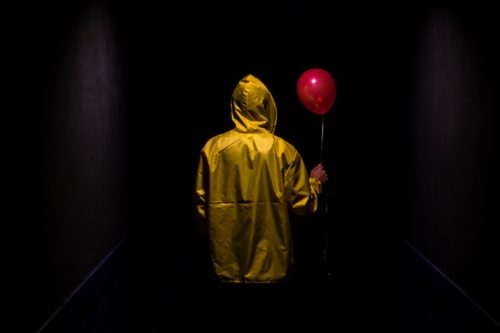
In 2017, Warner Bros released It, a retelling of Stephen King's terrifying tale about an epically nightmarish clown. The freaky film brought in a staggering $327.48 million, making it the highest-grossing R-rated horror movie of all time. It's followed by 1973's The Exorcist ($232.91 million), 2017's Get Out ($176.04 million), 1999's The Blair Witch Project ($140.54 million), and 2013's The Conjuring ($137.4 million)—that's a whole lot of money-making horror!
28. Halloween is the Wiccan New Year.
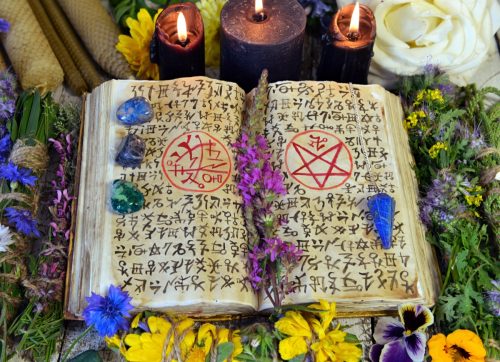
For those who practice Wicca, a pagan, nature-based spirituality, Oct. 31 isn't just "All Hallows Eve," it's also the New Year. Wiccans mark the occasion called Samhain (pronounced "sow-win") as the passing of one year and the beginning of another. "In the Druid tradition, Samhain celebrates the dead with a festival on October 31 and usually features a bonfire and communion with the dead," according to the History Channel.
RELATED: 35 Disney Facts That Will Bring Out Your Inner Kid.
29. The fear of Halloween is called samhainophobia.
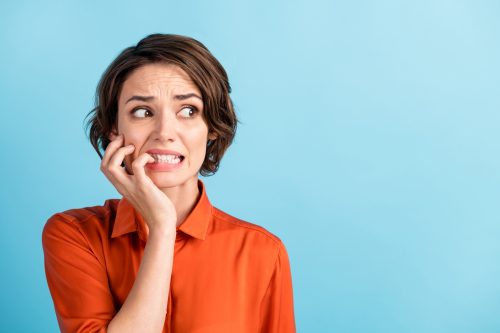
Not everyone enjoys wearing costumes and bobbing for apples. Samhainophobia is "defined as a persistent, abnormal, and unwarranted fear of Halloween," according to Very Well Mind. The problem can stem from a dislike of being scared or surprised or might be triggered by certain Halloween-related imagery, like ghosts, tombstones, or vampires.
30. There are some seriously strange Halloween superstitions.
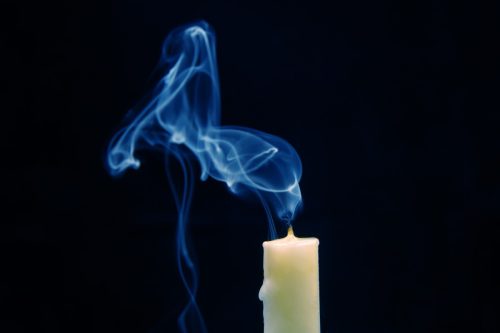
Most people know that it's bad luck to break a mirror or walk under a ladder, but other Halloween superstitions may seem downright strange to you. For instance, some folks believe that if a candle burns a blue flame on Oct. 31, a ghost might be haunting it. Others believe that if you speak during dinner on Halloween, it encourages spirits to come to the table.
31. The Great Jack o'Lantern Blaze in New York's Hudson Valley includes more than 7,000 carved pumpkins.
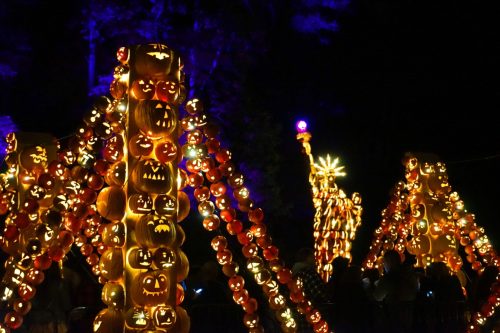
This exciting festival just might be the most Instagrammable Halloween event on the planet. Every year, a team of artisans carves more than 7,000 jack-o'-lanterns. The pumpkins are incorporated into a variety of exhibits, including a Pumpkin Planetarium, a Pumpkin Carousel, and even a 25-foot-tall jack-o'-lantern Statue of Liberty, complete with synchronized lighting and a custom soundtrack.
32. But the world record for the most lit jack-o'-lanterns on display is 30,581.
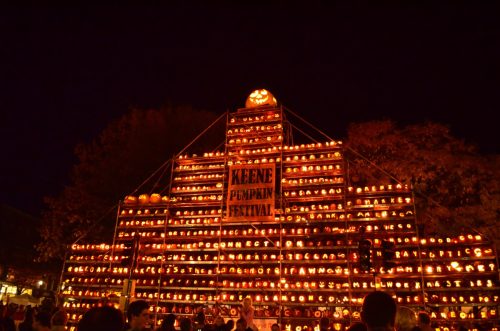
If you're looking to see a lot of jack-o'-lanterns in one place, then head to the city of Keene, New Hampshire. On Oct. 19, 2013, this town set the world record for the most lit jack-o'-lanterns on display. Keene was the original record holder in this category and has broken its own record eight times since its original attempt. The display is currently up to 30,581 jack-o'-lanterns!
33. The Michael Myers mask in Halloween is modeled after a familiar face.

Today, we associate the Michael Myers mask worn throughout the Halloween series with the terrifying (fictional) murderer. But the mask was actually created with someone else's likeness in mind. A member of the production crew picked up a $2 mask of William Shatner as Captain Kirk in Star Trek from a Hollywood Boulevard magic shop and began thinking of ways to incorporate it into the film. He spray-painted it white to achieve that creepy look, and the rest is horror history.
34. The record for the fastest pumpkin carving is under 17 seconds.
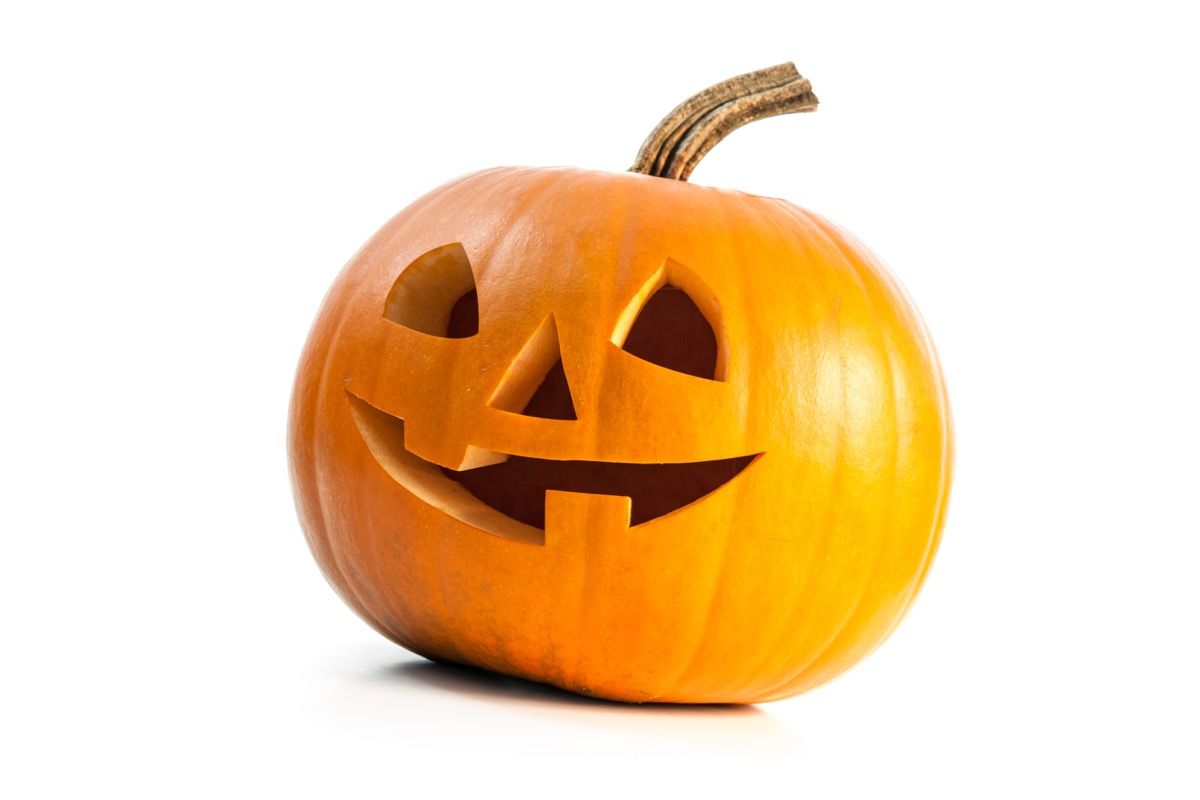
Stephen Clarke of New York holds the Guinness World Record for the fastest pumpkin carving time, having created a jack-o'-lantern in just 16.47 seconds. The pumpkin had a complete face, including eyes, nose, mouth and ears.
35. You can find traditional Halloween bread in Ireland.

Barmbrack bread is often made in honor of Halloween and other fall celebrations. The dish typically consists of yeast and dried fruit that has been soaked overnight in hot tea. Occasionally, you might find a loaf with a ring baked into the center. Supposedly, whoever finds it in their slice will experience some good luck soon after.
Wrapping Up
That's it for our list of the best Halloween facts! Be sure to check back with us soon for even more trivia. You can also sign up for our newsletter so you don't miss out on what's next!





















